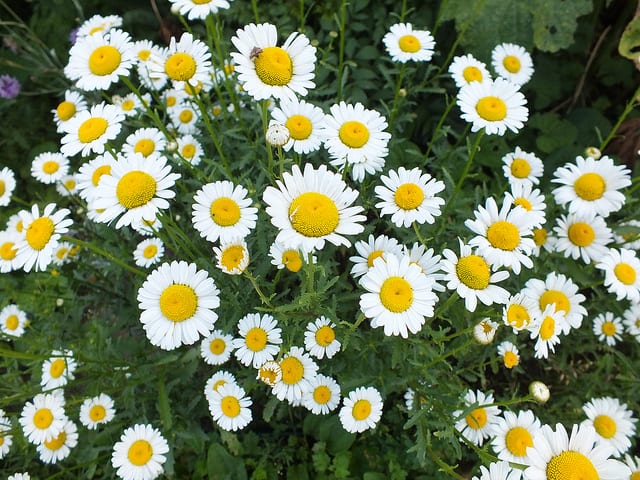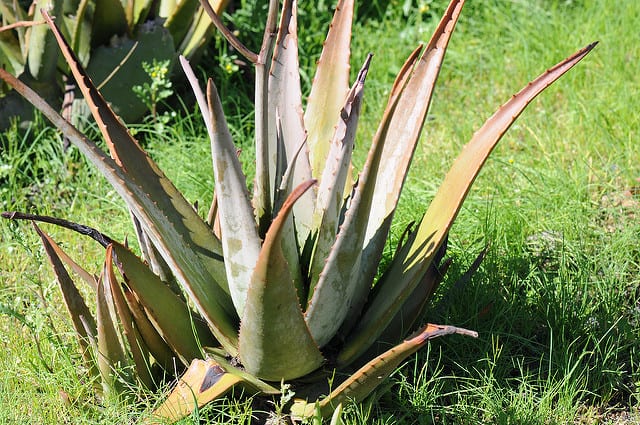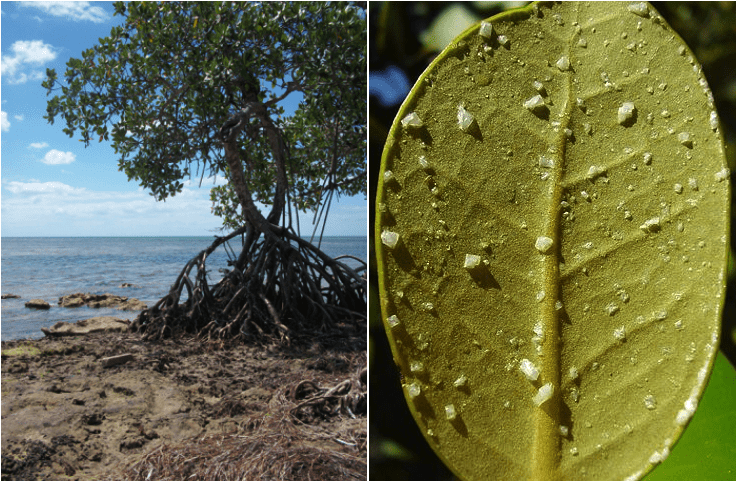Water availability has come up in recent news cycles as we face record droughts in the American west, depletion of aquifers in the Great Plains, and increasing flooding across the US due to climate change.
When we face these issues, we turn to either technology to find a solution, or our mobility to remove or relieve ourselves from the issues at hand. However, plants cannot simply pick up and move or invent a mechanical solution to these problems. So how do they persist in such harsh conditions?
The answer is eloquently stated by Jeff Goldblum in the classic film Jurassic Park: “Life, uh… finds a way.†Plants have evolved unique and intricate adaptations to the often harsh and dry environments in which they exist. To demonstrate these feats of evolution, here are four adaptations to the extremes in water conditions.
1. Avoid drought altogether

Plants exist even in Death Valley, CA—the hottest and driest location in the US. Plants here must take advantage of the water supply while it lasts and, therefore, have short lifetimes in which they grow, bloom, and spread their seed before drying up the soil.
The daisies pictured above are an example of annual wildflower that can be found only under very specific conditions, requiring adequate rainfall, warmth (even the desert gets cool in winter), and lack of drying desert winds; but these specific conditions are rare in deserts. So how do these plants cope?
When seeds fall to the soil or end up in your seed pack for growing at home, they are in a state of dormancy— impervious to the harsh conditions outside the seed. The embryo inside is alive and has nutrients to last until conditions are just right to sprout. Some seeds can last greater than 50 years in dormancy (the oldest was 2000 years old!), allowing certain plants to completely avoid the issue of water scarcity because the sprouted plant never actually encounters a lack of water in its lifetime.
2. Only breathe at night

The agave above isn't only the source of tequila, it is also a member of a large group of plants that have evolved to survive in hot and dry environments.
All plants must take in carbon dioxide in order to form sugars as their source of food and sustenance. In order to do so, plants undergo gas gas exchange, taking in carbon dioxide and releasing oxygen.
Unfortunately, when plants open their pores (or stomata) to take in air, water vapor is sucked out as well, evaporating to the surrounding air. Water always move from moist to dry regions of air, and therefore is quickly wicked away from the saturated plant and evaporated into the dry air. This drawing of water from the plant happens slowly in humid areas and more quickly in hot, dry areas.
So how does a plant in the desert not lose all its water to the hot, dry air it lives in? They open their stomata at night, when temperatures have dropped and the humidity of the air around them has risen, and keep them sealed during the harsher conditions of the day. This way, their store of water isn't depleted and they can still receive all the carbon dioxide they need.
Most plants will draw in carbon dioxide and create sugars during the day, while these plants will draw in carbon dioxide during the night, and wait until they can get sunlight energy to make their sugars in a process called CAM photosynthesis. This process requires the ability to make and store carbon as an acid (malic acid) through the night, waiting to make use of this carbon in the daytime.
3. Use a snorkel
We've discussed how plants manage to persist in regions without ample water supply, but what's a plant to do when there is simply too much water? Soil that is waterlogged, such as those in wetlands can often become hypoxic, or depleted of oxygen, because soil microbes will use up the oxygen faster than it can be replenished without access to air.
You might ask why this is a problem. Plants don't breathe oxygen; they need carbon dioxide, right? Well, that's only half correct, as oxygen is needed for cells to undergo cellular respiration, the process of breaking down the sugars that the plant made in photosynthesis.
This process can occur without oxygen, but is much less efficient, so many wetland species have evolved a specialized tissue called aerenchyma. This creates a spongy stem that allows for air circulation for oxygen to be spread through the plant for more energy-efficient cell respiration.
4. Make use of saltwater instead of fresh

Mangroves face an entirely separate problem from the plants above, in that they do not face either water disparity or overabundance. However, the water they do have access to has levels of salt that can be toxic to plant cells. So in order to survive in these environments, mangroves have evolved two mechanisms of salt tolerance: salt exclusion and salt extrusion.
Some mangroves are salt excluders that filter saltwater through a system of root membranes coated in special protein called suberin. Suberin filters 90-97% of salt from entering the xylem, or water-conducting elements, of the plant.
Other mangroves are salt extruders, and they actually allow salt to enter the xylem of the plants, but pump the salt onto the surface of leaves, allowing plant cells to avoid the toxic effect of salt accumulation.
Whether there is too much water, too little, or simply not the right type, plants will find a way to make use of it. Plants may not be able to move themselves away from harsh conditions, but they surely can evolve to withstand them.
About the Author
 Alex Pilote is a PhD candidate in the Plant Biology department at the University of Georgia, studying water relations and drought resistance in wild sunflowers. When out of the greenhouse, he can be found running, hiking, camping, or attempting to work on his house. You can contact him at apilote@uga.edu. More from Alex Pilote. Alex Pilote is a PhD candidate in the Plant Biology department at the University of Georgia, studying water relations and drought resistance in wild sunflowers. When out of the greenhouse, he can be found running, hiking, camping, or attempting to work on his house. You can contact him at apilote@uga.edu. More from Alex Pilote. |
About the Author
- athenssciencecafehttps://athensscienceobserver.com/author/athenssciencecafe/April 17, 2020
- athenssciencecafehttps://athensscienceobserver.com/author/athenssciencecafe/April 12, 2020
- athenssciencecafehttps://athensscienceobserver.com/author/athenssciencecafe/April 3, 2020
- athenssciencecafehttps://athensscienceobserver.com/author/athenssciencecafe/March 30, 2020







